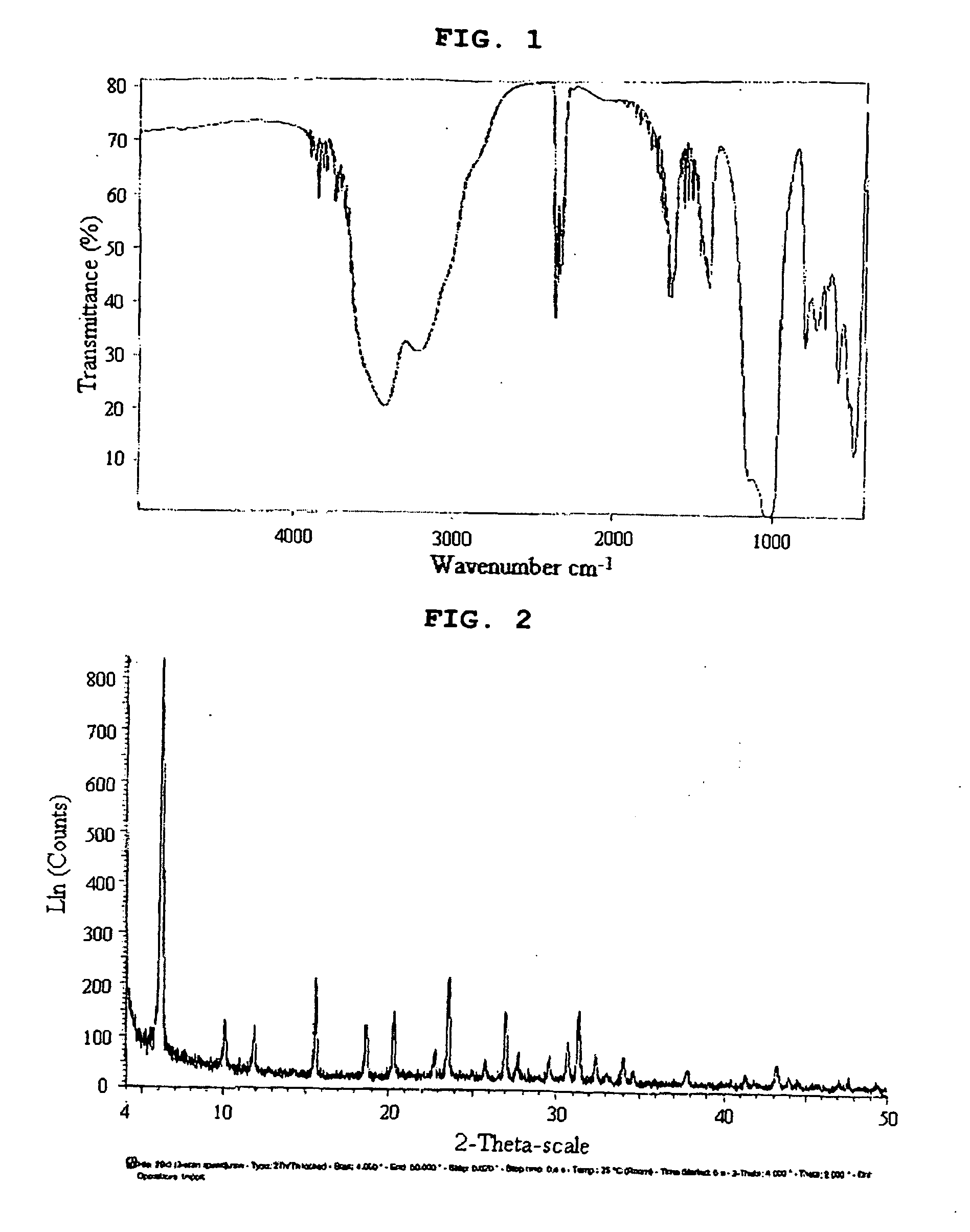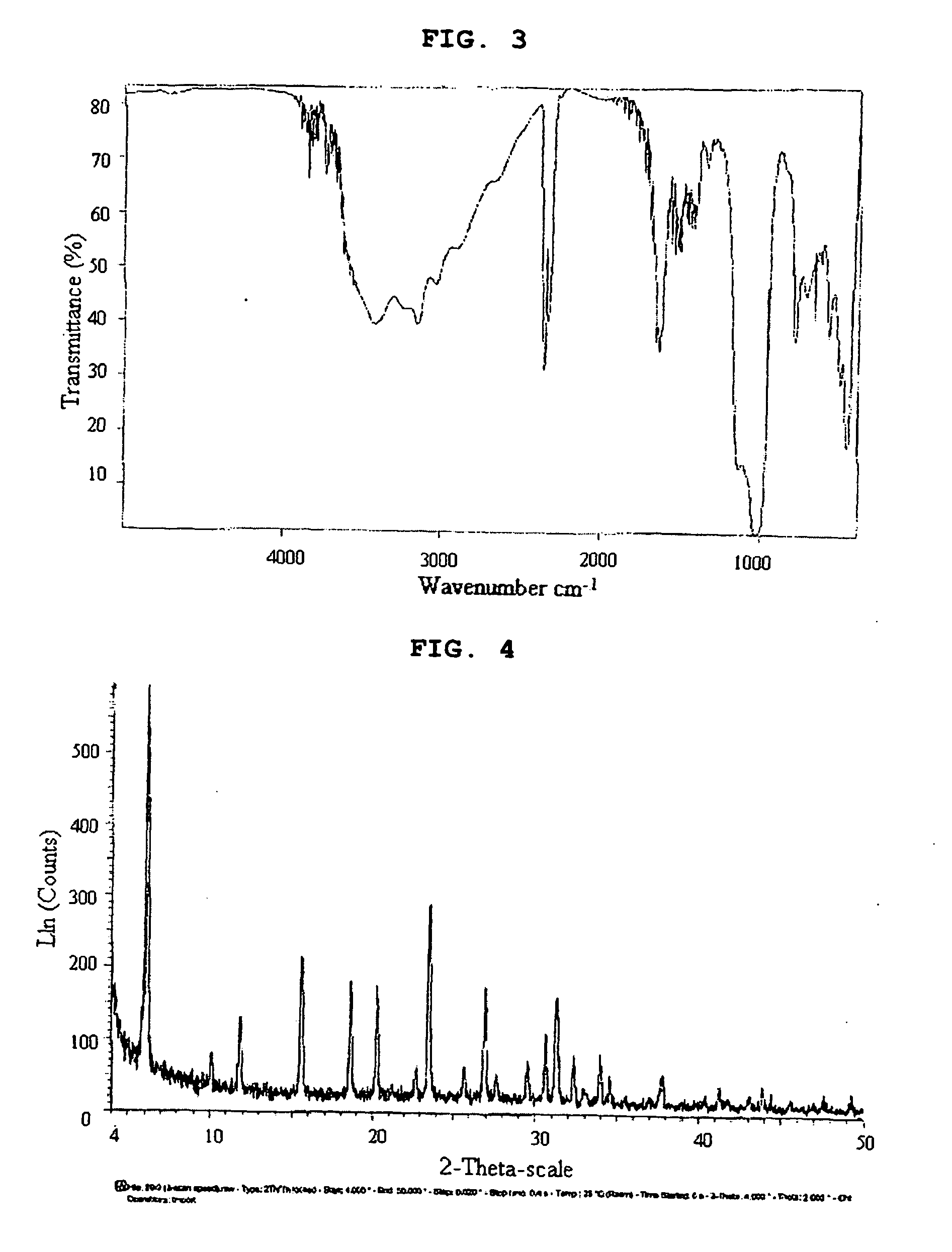Chiral inorganic-organic composite porous material and method for preparing the same
a composite material and organic technology, applied in the field of chiral inorganic organic composite porous materials, can solve the problems of inactive or even toxic other isomers, high preparation cost, and large concentration of academic or industrial researchers, and achieve the effects of improving physiological activity and selectivity, efficient and fast method, and improving the effect of selectivity
- Summary
- Abstract
- Description
- Claims
- Application Information
AI Technical Summary
Benefits of technology
Problems solved by technology
Method used
Image
Examples
examples 1-18
Example 1
Preparation of Chiral Inorganic-organic Composite Porous Material
[0044]1-1: Ion Exchange of Na-Y Zeolite with Cu2+
[0045]10 g of purified powder of hydrated Na-Y zeolite having the composition formula Na55Si137Al55O384 was mixed with CuCl2 solution (Aldrich, Certified ACS grade) (i.e., a two times large amount of Cu(II) than the amount required for complete ion exchange) at 25° C. The mixture (pH 6.13, 25° C.) was sometimes stirred, and replaced with fresh solution two times a day. These steps were performed for 5 days, and then, the resulting suspension was filtered through an absorption tube. The filtrate was washed with deionized water to remove the remaining CuCl2 ions, followed by drying at 25° C. After the ion exchange, the powder turned from colorless to blue. The obtained powder was dissolved in 6M HCl and analyzed by inductively coupled plasma (ICP) spectrometry.
[0046]The ICP measurement was performed in nitrogen oxide / acetylene flames using an ICPS-1000IV spectrome...
example 2
[0052]A chiral inorganic-organic composite porous material was prepared by performing ion exchange in the same manner as in Example 1 except that L-histidine in place of L-serine was used. The results of IR and XRD analyses are shown in FIGS. 3 and 4, respectively.
example 3
[0053]A chiral inorganic-organic composite porous material was prepared by performing ion exchange in the same manner as in Example 1 except that L-cystein in place of L-serine was used. The results of IR and XRD analyses are shown in. FIGS. 5 and 6, respectively.
PUM
| Property | Measurement | Unit |
|---|---|---|
| Electric charge | aaaaa | aaaaa |
Abstract
Description
Claims
Application Information
 Login to View More
Login to View More - R&D
- Intellectual Property
- Life Sciences
- Materials
- Tech Scout
- Unparalleled Data Quality
- Higher Quality Content
- 60% Fewer Hallucinations
Browse by: Latest US Patents, China's latest patents, Technical Efficacy Thesaurus, Application Domain, Technology Topic, Popular Technical Reports.
© 2025 PatSnap. All rights reserved.Legal|Privacy policy|Modern Slavery Act Transparency Statement|Sitemap|About US| Contact US: help@patsnap.com



